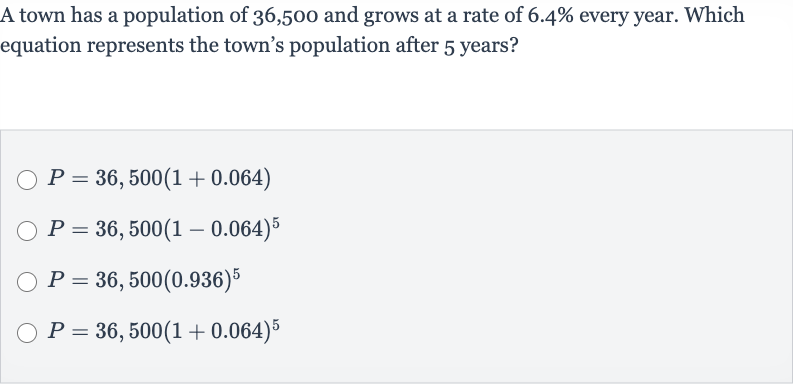Full solution
Q. A town has a population of , and grows at a rate of every year. Which equation represents the town's population after years?
- Rephrase the Question: First, let's rephrase the "What is the equation that represents the town's population after years, given an initial population of and an annual growth rate of ?"
- Identify Initial Population and Growth Rate: Identify the initial population and the growth rate . The initial population is given as , and the growth rate is , which can be expressed as a decimal by dividing by : .
- Determine Growth Factor: Determine the growth factor . The growth factor is plus the growth rate, so .
- Write Exponential Growth Equation: Write the exponential growth equation. The general form of an exponential growth equation is , where is the population after time , is the initial population, is the growth factor, and is the time in years. In this case, years.
- Substitute Known Values: Substitute the known values into the equation to get the specific equation for this problem: .
More problems from Write exponential functions: word problems
QuestionGet tutor help
QuestionGet tutor help
QuestionGet tutor help
QuestionGet tutor help
QuestionGet tutor help
QuestionGet tutor help
QuestionGet tutor help
QuestionGet tutor help
QuestionGet tutor help

